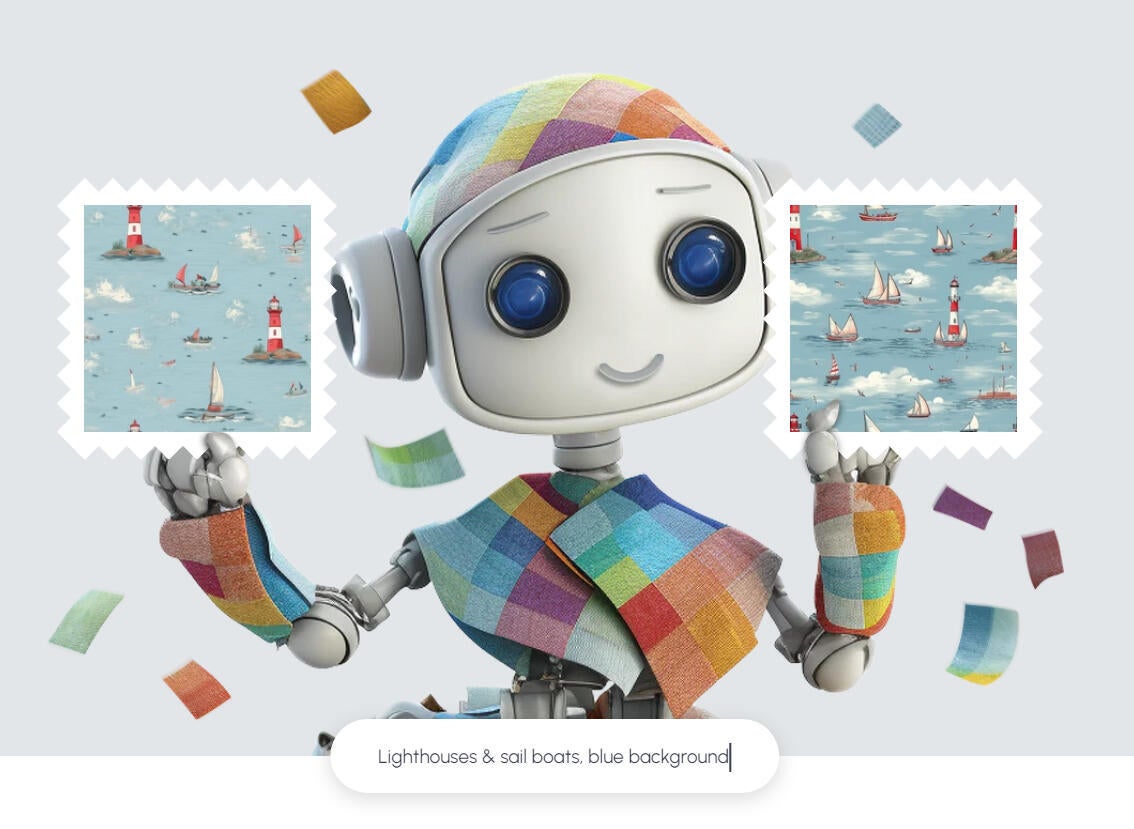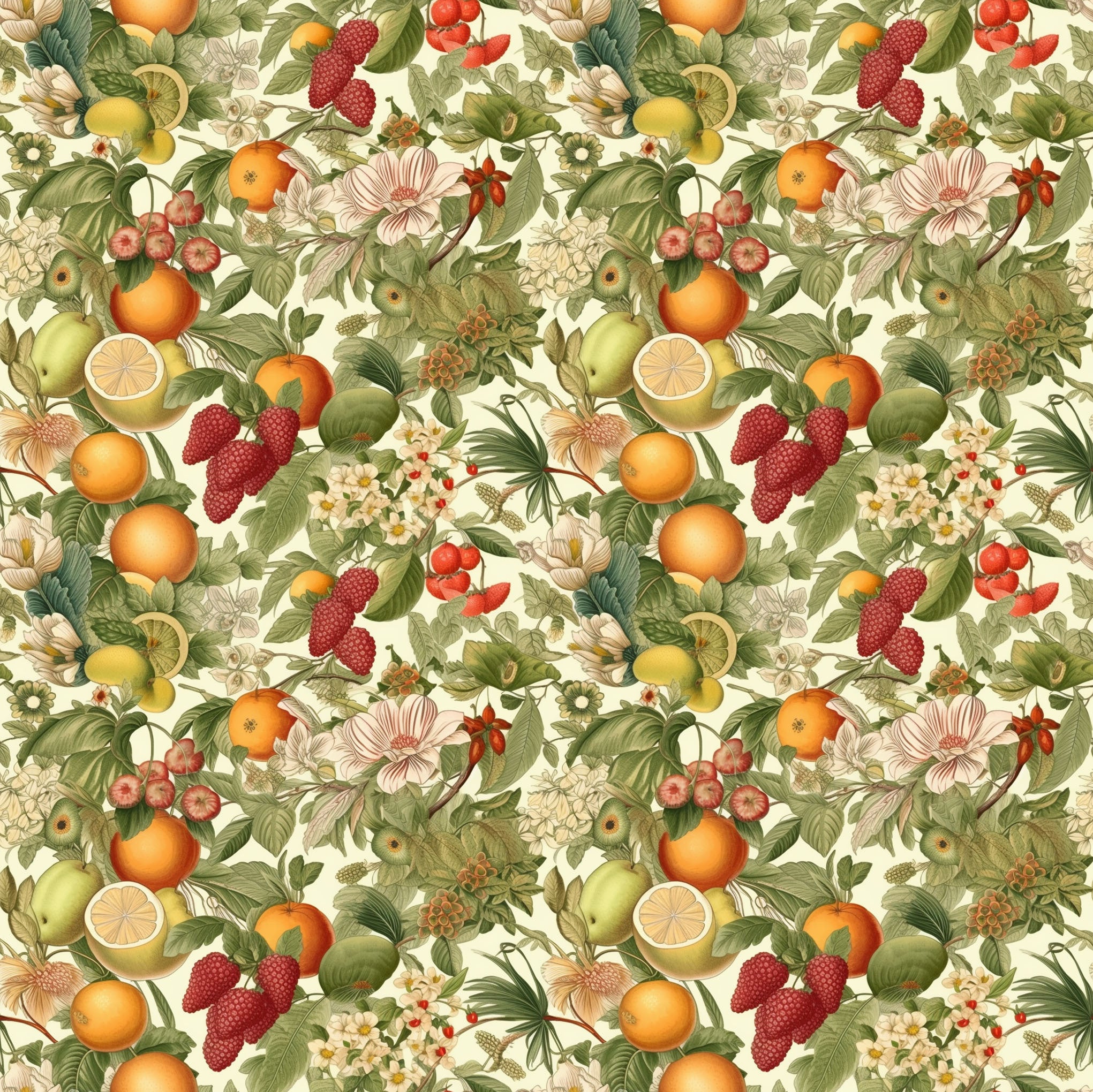Artificial intelligence is already passing the bar exam, penning college essays and writing code—it was only a matter of time before someone put it to work designing floral chintz. Enter FabricGenie, an AI-powered textile design tool created by entrepreneurs Danny Richman and Carl Fisher, the owner of U.K.–based fabric company The Millshop Online.
“My background is in SEO, and I had worked with [The Millshop Online] on marketing, but more recently I had been experimenting with AI, and I realized they could use it to generate designs,” says Richman. “That transformed into the idea of making it a public tool that anyone could use.”
The move was rooted in more than just technological capability. “Designers would contact us to print their own designs,” adds Fisher, whose company began as a retailer, moved into wholesale, then developed a digital fabric printing operation. “The issue was that the images weren’t always in the correct format. … now consumers and designers can create something themselves that’s exclusive to them.”
FabricGenie allows users to input a series of prompts—“red flowers against a cream backdrop,” say—and receive a pattern, complete with working repeats, delivered free via email minutes later. If you like what you see, swatches, digitally printed on cotton or a cotton-linen blend, are $8. Ordering a print run of your pattern is $27 per square meter.
FabricGenie launched only a few weeks ago but has already drawn considerable interest from a public newly fascinated by AI. Within a week of launch, Fisher says the tool—which requires users to provide an email address—received requests for 3,800 designs and 500 swatch orders. Most were within the bounds of normal taste. Some were not.

“We’ve had some really weird requests,” says Richman. “Someone asked for [former British Prime Minister] Theresa May surrounded by cheese. We’ve had quite a few that have been bordering on indecent as well—that was a challenge we had with this, was to create a moderation system. People will put vile language into this thing, and you need to stop the AI from generating it.”
Most of the technical challenges were more straightforward. Image-generating AI tools like Dall-E and Midjourney can already generate patterns when prompted—the trick, says Richman, was getting one to produce accurate repeats, scaling up the resulting image to the necessary resolution and building a user-friendly interface. Plug that into a company that, like Fisher’s, has the capability to digitally print fabric, and you’ve got a business.
Like most AI tools, FabricGenie has limitations. While it can produce startlingly good basic patterns, its creations—even the weird ones—are an algorithmic “average” of previously existing images. You can get it to cough up an image of Theresa May surrounded by Brie, but don’t look for it to break aesthetic ground. And, like all existing AI tools, you can’t fine-tune FabricGenie’s work; if you like everything about a pattern but wish that one flower could be blue instead of red, there's no option to edit the pattern. You have to start over.
“The technology is not yet perfect,” says Richman. “But it’s evolving every day and every week—it’s only going to get better. Right now is the worst it will ever be.”
At the moment, FabricGenie appears to mostly be an effective marketing hook for The Millshop Online. But Fisher and Richman are optimistic that once the public becomes acclimated to the notion of generating your own fabric designs, the tool will see more use. The two are planning to market it to interior designers and white label it for other sites. “I firmly believe it will produce a lot of yardage,” says Fisher. “Each interior designer can come up with something personal for each customer.”
And as for the textile designers that FabricGenie is potentially edging out of work? “Some have embraced it,” says Fisher. “Some have not.”
Homepage image: A pattern generated by FabricGenie featuring flowers and fruit | Courtesy of FabricGenie





























